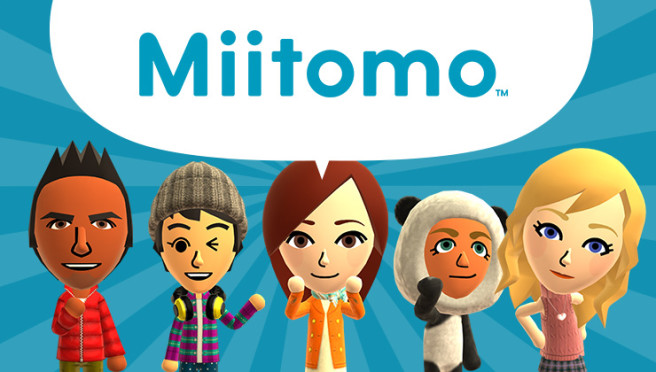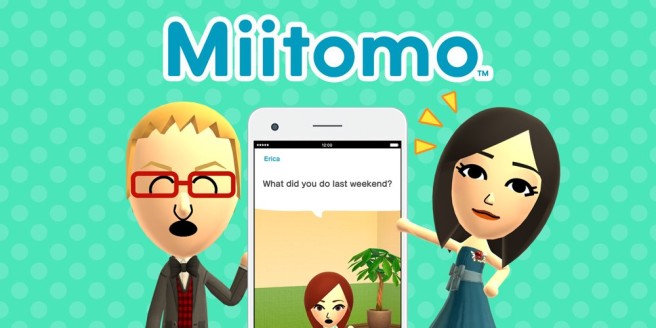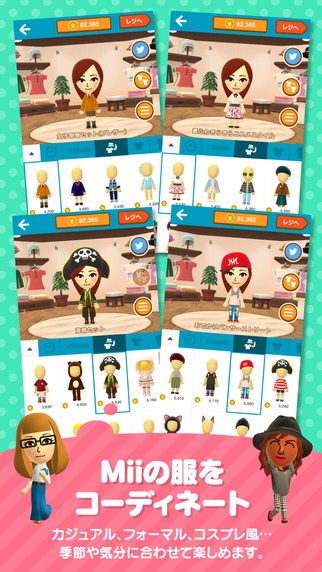Rumor: First off-screen Pokemon GO footage
Posted on 9 years ago by Brian(@NE_Brian) in Mobile, Rumors, Videos | 27 Comments
Update: We’ll keep the rumor tag until it’s 100% confirmed, but this is looking even more legitimate. Here’s another look at the same footage from one of the SXSW panel attendees:
Never before seen animation of PokemonGo shared at #SXSW2016 by @johnhanke @PokemonGoNews pic.twitter.com/zzXnpdgD40
— Tom Woodhead (@TomWoodhead) March 19, 2016
Niantic may have just shown the first Pokemon GO footage during a panel at SXSW. Take a look at some off-screen gameplay below.
As this has not been 100% confirmed, we’re marking the post to indicate its current rumor status.
More: Niantic, Pokemon GO, top
Yoshio Sakamoto is behind Miitomo
Posted on 9 years ago by Brian(@NE_Brian) in Mobile, News | 44 Comments
Who led the way on Miitomo, Nintendo’s first mobile app? It may not come as a huge surprise, but we now have confirmation that it’s a Yoshio Sakamoto joint. IGN’s Jose Otero shared that noteworthy tidbit of information during the latest Nintendo Voice Chat podcast.
Sakamoto was the producer on Tomodachi Life, and Miitomo takes several cues from the 3DS title. He’s also played a big role in Metroid as well as other series such as Rhythm Heaven.
Nintendo is keeping quiet on a number of other specifics surrounding Miitomo and other mobile apps. IGN asked about the team size and how long the app was in development, but couldn’t get answers to either question. Nintendo was also asked if the company has identified the other mobile titles they’re planning, but did not have much to say on this front either.
More: Miitomo, top, Yoshio Sakamoto
Reggie on Miitomo – why it doesn’t have real-time messaging, “long-term opportunity”, mobile goals, more
Posted on 9 years ago by Brian(@NE_Brian) in Mobile, News | 12 Comments
Members of the media recently went hands-on with Miitomo, which also included some interview opportunities. TIME is one outlet that has an interview up with Nintendo of America president Reggie Fils-Aime. During the discussion, Reggie commented on why Miitomo doesn’t have real-time messaging, “long-term” plans for the app, mobile goals, and more.
Head past the break for some of Reggie’s remarks. You can read the full interview on TIME here.
More: interview, Miitomo, Reggie Fils-Aime, top
More Miitomo footage
Posted on 9 years ago by Brian(@NE_Brian) in Mobile, Videos | 9 Comments
A bunch more videos with footage of Miitomo have come in. You can watch another set of gameplay below.
More: Miitomo
Tomodachi Life QR codes are compatible with Miitomo
Posted on 9 years ago by Brian(@NE_Brian) in Mobile, News | 0 comments
Here’s an interesting little tidbit about Miitomo. Tomodachi Life QR codes work with the app, meaning you can easily bring over your character. The Mii’s name, voice, appearance, and personality transfer. Your catchphrase also becomes your greeting. You can use the QR code so long as you’ve sen “allow copying” on.
More: Miitomo, Tomodachi Life
Miitomo launch trailer
Posted on 9 years ago by Matt(@OnePunchMaz) in Mobile, Videos | 14 Comments
Miitomo launched today in Japan for mobile devices – Nintendo’s first smartphone app will make its way to Europe and North America later this month. Nintendo just published a launch trailer for the app on its new Nintendo Mobile Youtube channel:
More: Miitomo
Miitomo footage
Posted on 9 years ago by Brian(@NE_Brian) in Mobile, Videos | 6 Comments
Our first proper look at Miitomo is here, thanks to footage taken by “TiLMENDOMiNATiON”. It’s all in English, which makes things even better! Take a look at the video below.
Miitomo now live in Japan
Posted on 9 years ago by Brian(@NE_Brian) in Mobile, News | 7 Comments
Miitomo releasing on March 17 in Japan
Posted on 9 years ago by Brian(@NE_Brian) in Mobile, News | 16 Comments
Miitomo will launch in Japan on March 17, Nintendo has announced. Pre-registration will close at 12:00 Japan time.
A specific start time (in actual hours) has not been determined just yet. Once it’s live, there will be notifications on the Nintendo Twitter account and also to pre-registered email addresses.
Previously, Nintendo confirmed plans to bring out Miitomo in March, but had not provided a specific date until today. It’s unclear when other regions will be receiving the app, though it should be sometime this month.
Pokemon GO – sign ups for Japanese field test open, happening this month
Posted on 9 years ago by Brian(@NE_Brian) in Mobile, News | 0 comments
Progress is still being made with Pokemon GO, and one of the game’s biggest steps yet is happening in Japan later this month. Niantic has now opened up sign ups on its website for a Japanese field test. This will be taking place later in the month.
As Niantic said today:
“The Pokémon Company and Niantic will be inviting users to field test Pokémon GO in Japan later this month. The Pokémon GO field test program will give users the opportunity to share early feedback and help improve the Pokémon GO experience. Please stay tuned for information about expansion of the field test to other markets.”
Sign ups are live here. But note that, again, this is only for Japan.











